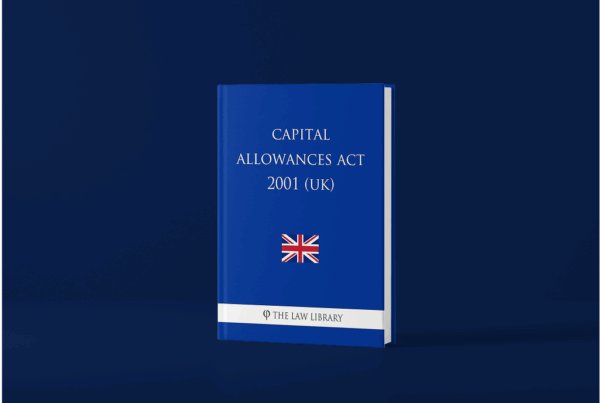The festive period is a good time for your clients to boost the income from holiday properties. If these qualify as furnished holiday lets, they attract favourable tax treatment, but how can you advise clients that fall just short of the qualifying conditions?
TAX ADVANTAGES
Where properties are let out as qualifying furnished holiday lettings (FHLs), a number of favourable tax treatments apply. All commercial FHLs of UK accommodation are treated as a single trade for most income tax or all corporation tax (CT) purposes, as applicable.
Similarly, all their FHL activities elsewhere in the EEA are treated as a single trade, but with a number of restrictions. Note. For income tax, any FHL loss can’t be set against general income; it can only be carried forward against future income from the same business.
FHLs are also treated as a trade for CGT or, if applicable, CT on chargeable gains. This applies for rollover relief on replacement business assets, gifts of business assets, relief for loans to traders, entrepreneurs’ relief (ER) and the substantial shareholdings exemption. Note. It doesn’t apply for EIS deferral relief.
QUALIFYING
To be classed as an FHL (and secure these tax breaks), a number of conditions need to be met. Accommodation doesn’t qualify unless, throughout the tax year or an alternative defined twelve-month period:
- in aggregate, periods of longer-term occupation- meaning continuous periods of more than 31 days during which the accommodation is in the same occupation (unless the circumstances are “exceptional”)- do not exceed 155 days (the pattern of occupation condition).
- it is available for commercial letting to the public generally as holiday accommodation for at least 210 days (the availability condition); and
- it is commercially let as holiday accommodation to members of the public for at least 105 days, excluding periods of longer-term occupation as defined above (the letting condition).
Pro advice. If a property qualifies as a FHL for a year, the full income from letting it qualifies as part of the deemed trade, including income from non-holiday lettings such as unprofitable off-season lets.
In practice it often transpires that despite your clients’ best efforts, the letting condition of 105 days is not met for a particular year. In these circumstances there are two elections that might help to preserve the FHL status, and therefore the beneficial tax treatments.
AVERAGING ELECTION
The averaging election may be used where the FHL property business in a particular year includes at least one qualifying FHL and one or more properties that would qualify but for their failure to meet the letting condition.
Your clients may elect to apply the letting condition for that year to all properties specified in their election as though each had achieved the average rate of occupancy for those properties. A qualifying property may not be specified in more than one election for a year.
Pro advice 1. Your clients may only average across properties in one FHL business. They can’t mix UK and EEA FHL properties together.
Pro advice 2. HMRC guidelines suggests than an averaging election must apply to all properties let within the FHL business. This is incorrect- properties can be averaged selectively.
PERIOD OF GRACE ELECTION
A property may qualify as a FHL in Year 1 (either in fact or as a result of averaging) but then fail to meet the letting condition in Year 2, even though the occupation and availability conditions are still met. In such circumstances a period of grace election may be made in respect of the under-used accommodation.
Your client must have had a genuine intention to let the property in Year 2. HMRC might want evidence that the property was marketed to the same or a greater level than in successful years, or that lets were cancelled due to unforeseen circumstances such as extreme weather.
If the property again fails to meet the letting condition in Year 3, they can make a second period of grace election (as long as they made such an election for Year 2).
If the property still fails to reach the threshold by Year 4, after two consecutive periods of grace, it won’t qualify as a FHL in Year 4 unless brought in by averaging.
Pro advice. An averaging and period of grace election can be made in respect of the same year (see case study below).
An averaging or period of grace election must be made by the first anniversary of the normal filing date for income tax, or within two years of the end of the accounting period for CT.
CASE STUDY
Tom acquires his FHL business on 6 April 2014. It consists of three actively marketed holiday properties which meet the pattern of occupation and availability condition from 6 April 2014 until the business is sold on 5 April 2018.
Unexpectedly, one property (C) was difficult to let in 2015/16 and 2016/17 because of oil pollution on local beaches.
Each year the qualifying periods of holiday letting (in days) amount in aggregate to:
| A | B | C | |
| 2014/15 | 120 | 100 | 100 |
| 2015/16 | 110 | 100 | 30 |
| 2016/17 | 120 | 95 | 50 |
| 2017/18 | 120 | 100 | 95 |
If no elections are made, only A meets the letting condition in each year. On the sale on 5 April 2018, A is treated as a single FHL trade qualifying for ER (CGT rate 10%). B and C are taxed as residential properties (CGT rate 28%). Tom can resolve this by doing the following.
2014/15. By electing to average A, B and C, all properties meet the letting condition.
2015/16. By electing to average A, B and C, all properties meet the letting condition.
2016/17. By electing to average A and B, both properties meet the letting condition. By a second period of grace election, C meets the letting condition.
2017/18. By electing to average A, B and C, all properties meet the letting condition.
If the suggested elections are made, all three properties have met the letting condition throughout, even though B and C were never let for as many as 105 days. On the sale, all three properties are together treated as a single FHL trade for ER purposes (CGT rate 10%).
ADVISING
There are significant income tax, CT and CGT advantages to be obtained by ensuring that FHLs qualify. If your clients’ property fails to meet the letting condition, always do an exercise to see if an election can be made.
Pro advice. Averaging can be particularly useful where a holiday property business includes some properties on which high occupancy levels can easily be achieved and others where meeting the letting condition presents more of a challenge.
Despite the HMRC guidance being incorrect on the averaging point (as discussed above), is still a useful reference point when considering the elections.
Your clients’ qualifying status could be preserved by using either an averaging or period of grace election- or even both concurrently. These allow a non-qualifying property to be deemed as qualifying for a particular year, providing certain conditions, such as genuine intention to meet the letting condition- are met.



